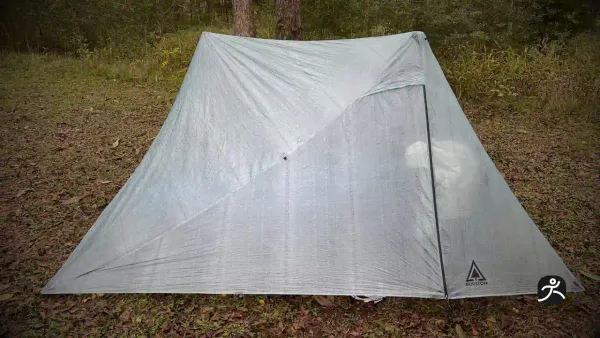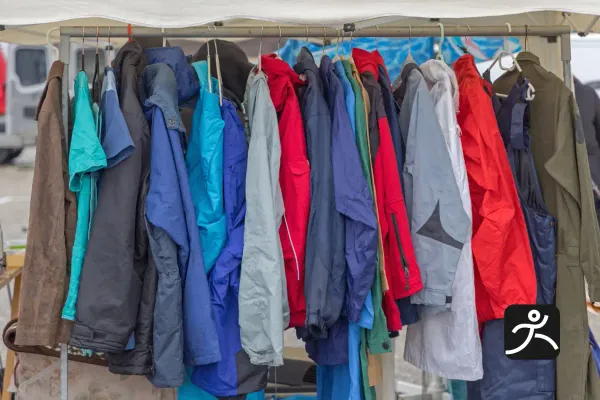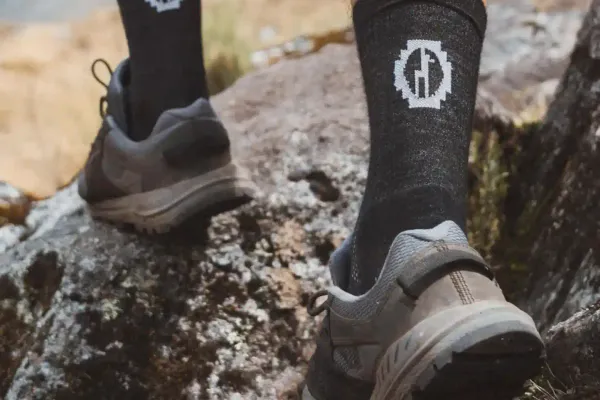Comfort vs. Weight: Simple Guide to Sleeping Pad Selection
Discover the best sleeping pads for fastpacking: balance weight, comfort, and durability. Learn about air pads, self-inflating options, and closed-cell foam mats for your adventures.

When you're selecting a sleeping pad for fastpacking, it's vital to balance weight, comfort, and durability. You don't want to carry unnecessary bulk, but a good night's sleep is important for maintaining energy on the trail.
Think about how the two main types of pads—inflatable pads, and closed-cell foam mats—can meet these needs. You'll also need to take into account the R-Value for insulation and how the pad packs down.
Curious about which pad might be best for your next adventure? Let's explore the advantages and drawbacks of each type.
Exploring Sleeping Pad Options for Fastpackers
When choosing a sleeping pad for fastpacking, you'll encounter several types, each with distinct advantages.
Air pads are known for their lightweight design, making them ideal for those aiming to minimize pack weight.
Closed-cell foam mats stand out for their durability and consistent insulation, requiring no inflation and being nearly indestructible.
Hybrid pads combine features of air and foam, offering versatility for various conditions.
Lastly, ultralight pads, designed with open-core structures and individual baffles, prioritize reducing weight and bulk.
Air Pads: Lightweight Champions for Fastpacking
For fastpackers prioritizing minimal weight and maximum packability, air pads stand out as a top choice. These pads are lightweight and compact, ideal for reducing the bulk in your pack.
Air pads offer customizable firmness, letting you adjust the comfort level to match your needs and the terrain. While they can be prone to punctures, air pads are easily repairable in the field, ensuring durability throughout your fastpacking adventures.
Many air pads also feature insulation properties, providing necessary warmth in varying weather conditions. Designed with thin laminated fabrics, they balance comfort, insulation, and packability.
Their portability makes them a convenient option for fastpackers aiming for a light and efficient setup.
Closed-Cell Foam Mats: Durable and Reliable Choices
When considering closed-cell foam mats for fastpacking, you'll appreciate their durability and longevity, as they resist punctures and withstand rough terrain.
Their lightweight and compact nature make them easy to pack and carry, ideal for minimalist adventurers.
Additionally, these mats offer excellent insulation and warmth, ensuring you stay comfortable in various conditions.
Unmatched Durability for Rugged Adventures
Closed-cell foam mats offer unmatched durability, making them an excellent choice for fastpackers who need reliable, long-lasting gear.
The durability of closed-cell foam mats guarantees they resist tears, punctures, and wear over time. These mats excel in longevity, providing consistent performance on rugged terrain during fastpacking trips.
Their construction guarantees they maintain shape and insulation properties, even with frequent use. Because of their robust design, closed-cell foam mats are low-maintenance and can withstand harsh conditions.
Lightweight and Compact Design for Efficiency
You'll find that closed-cell foam mats are the lightest and most compact sleeping pad option available for fastpacking. Weighing as little as 8 ounces, they minimize the weight you're carrying. Their packability is a major advantage, as they don't require inflation, making setup and pack-away quick and easy.
Despite their low weight, these mats offer reliable insulation with R-values ranging from 1 to 3. They're also extremely durable, resistant to punctures, and can withstand rugged terrain. Additionally, closed-cell foam mats are budget-friendly, making them a cost-effective choice without sacrificing comfort.
For fastpackers, these mats provide an excellent balance of weight, packability, and durability, ensuring a comfortable night's sleep on the trail.
Consistent Insulation for All-Weather Comfort
Insulation is a key benefit of closed-cell foam mats, providing essential warmth to keep you comfortable during your fastpacking adventures. These mats offer excellent insulation from the cold ground, essential for staying warm in various climates.
Closed-cell foam mats are also:
- Lightweight and durable: Perfect for fastpacking where every ounce matters.
- Quick and easy to set up: No inflation needed, saving you time and effort.
- Reliable warmth: No risk of punctures or deflation, ensuring consistent comfort.
Their insulating properties make them ideal for maintaining warmth throughout the night, allowing you to get a restful sleep.
Selecting Your Ideal Fastpacking Sleeping Pad
When choosing the right sleeping pad for fastpacking, prioritize a lightweight, compact design with a high R-Value for excellent insulation. An air pad is an outstanding choice due to its minimal weight and pack size.
For added convenience, self-inflating pads offer a balance of comfort and weight savings. A mummy-shaped sleeping pad can reduce weight while maximizing insulation.
Durability and puncture resistance are essential to withstand rugged terrain. Balancing weight, comfort, and warmth is vital for an ideal fastpacking experience.
Consider pads that provide adequate warmth without compromising on weight and comfort. Ensuring your pad has these qualities will make your fastpacking trips more enjoyable and efficient.

Understanding R-Value for Optimal Warmth
The R-Value of a sleeping pad is essential for ensuring you stay warm and comfortable during fastpacking treks. The R-Value measures the pad's insulation ability against cold ground temperatures, helping maintain your body heat.
When choosing a sleeping pad for fastpacking, consider:
- Nighttime lows: Select a pad with an R-Value suitable for the lowest expected temperatures.
- Proper insulation: Higher R-Values provide better insulation, important for comfort in colder conditions.
- Body heat retention: Efficient pads prevent heat loss to the ground, keeping you warmer.
Higher R-Values pads are particularly important for fastpacking due to the potential for colder nighttime lows. By selecting a pad with the appropriate R-Value for the conditions, you'll ensure proper insulation and warmth during your adventures.
Maximizing Packability Without Sacrificing Comfort
When choosing a sleeping pad for fastpacking, you'll want to focus on lightweight materials and compact storage options.
Pads made from high-tenacity nylon are both durable and light, often weighing under 1 lb.
Additionally, look for pads that pack down small to maximize space in your backpack, ensuring you can carry other essential gear.
Innovative Materials for Ultralight Pads
Selecting lightweight materials for your fastpacking sleeping pad is essential for reducing both weight and bulk in your pack.
Choosing the right materials can make a significant difference in your overall fastpacking experience. Opt for sleeping pads made from ultralight nylon, which offers excellent weight savings and packability.
Tapered designs also help minimize bulk and weight, making them easier to carry.
- Ripstop nylon: Provides durability without adding extra weight.
- High-tenacity fibers: Enhance the strength and longevity of the pad.
- Compressibility: Look for pads that can pack down to the size of a water bottle.
Space-Saving Strategies for Efficient Packing
A key to successful fastpacking is choosing a sleeping pad that doesn't just save weight but also packs down to a minimal size. Aim for lightweight options around 1lb to reduce your load.
Look for sleeping pads that pack down small, saving valuable space in your backpack. Efficient packability maximizes storage and allows for faster and more efficient travel.
This approach not only conserves space but also contributes to a more seamless fastpacking experience, allowing you to maintain a quick pace without being bogged down by bulky gear.
Balancing Comfort and Durability on the Trail
Finding the right balance between comfort and durability in a sleeping pad can make your fastpacking experience amazing or horrid. Aim for a pad that offers sufficient cushioning and support without adding too much weight. The material and construction are vital; make sure they can withstand rugged terrain and frequent use.
Quick or no inflation methods save you time and energy, enhancing packability and making your fastpacking trip more efficient. Look for these features to guarantee your sleeping pad meets the demands of the trail:
- Cushioning and Support: Prioritize a pad that balances weight and comfort.
- Durable Material: Opt for robust construction to endure tough conditions.
Efficient Fastpacking Sleep System Gear Picks
While many offer cost-effective solutions, let's explore some top gear picks that provide exceptional value and comfort for fastpacking. The following options cater to different personal preferences, ensuring a good night's sleep.
| Gear Option | Weight | Price |
|---|---|---|
| Therm-a-Rest NeoAir XLITE Sleeping Pad | 13 oz | 369 g | $209.95 |
| Nemo Tensor™ Trail Sleeping Pad | 13.9 oz | 395 g | $179.95 |
Exploring these gear choices can connect you to trusted retailers within the backpacking community. Always consider your specific needs and budget constraints when making a purchase.




